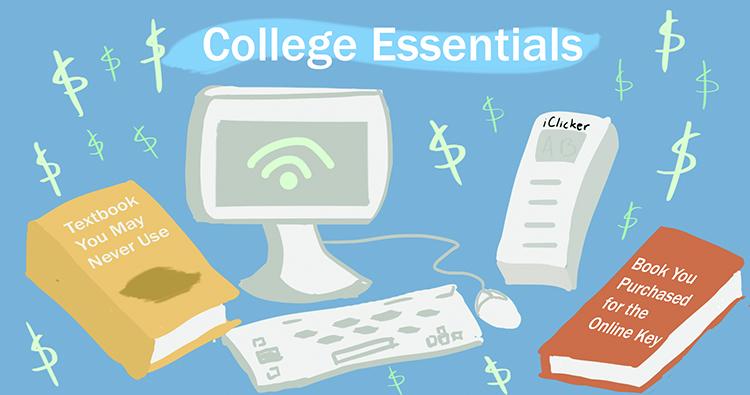It’s a truth universally acknowledged that college is expensive.
Students pay for housing and tuition, but it’s the additional costs of useless textbooks and the absolute necessity of a laptop that makes higher education out of reach for some students.
The $1,250 of extra supplies that students will need for college per year, according to College Data, are used for books that students will neither remember nor use. Math classes that only require an online key inside a $60 book, and courses that demand students to have laptop access are contributors to significant student financial struggles.
These kinds of expenditures are often unaccounted for, and lead students to find ways to survive. Living in the library is not an option at universities, and the disadvantaged that have no access to the necessary resources cannot succeed in college.
It’s not just textbooks that are taxing students, purchases of IClickers that have no practical use outside of the classroom, and more advanced laptops to avoid getting left behind are costly expenses. Students who do not have these items cannot take the classes they need, or do well in them.
Most college campuses provide wifi access and computers to use for free. However, at Chico State, the library closes just before midnight throughout the week and closes by 8 p.m. on Friday and Saturdays creating limited access to computers and study areas.
Although Chico State allows people to rent laptops, it can turn into a costly expenditure if not turned in on time with severe late penalties applied to tardy students.
If someone who relies on campus computers has issues with transportation at night or prefers to study during the hours the library is closed, it might be difficult to get assignments done and their checked out items turned in.
For those that are lucky enough to have the required essentials, life after college is a frequent fear, as the average debt of a four-year college graduate in California is $21,382, according to The Institute for College Access and Success.
People are left in debt despite two-thirds of full-time students getting assistance with financial aid between the years of 2014-2015 according to the College Board. In short, college is a battle for finances that continues even after graduating.
In 2014, the average amount of student loan debt approached $30,000, according to US News. This debt grows despite students being thrifty with their purchases. Using Chegg and used book sites to pick up the $100 textbook for half price might seem like a great deal, but not when it’s for a class that a person will never actually need, outside of getting a degree.
Yes, in today’s generation the amount of tuition needed to attend a university is drastically increasing as technology changes. Sure, a student could work around these obstacles by simply taking the risk and not purchasing a textbook or using a campus computer, but those situations leave the student susceptible to being fined and failing classes.
College is a massive amount of money, and the help that is offered to students still leaves them in debt. Changing the curriculum to combat the extra fees that the students are attempting to survive would help people achieve their full potential as students.
Rachel Reyes can be reached at opinioneditor@theorion.com or @rachhreyes on Twitter.






